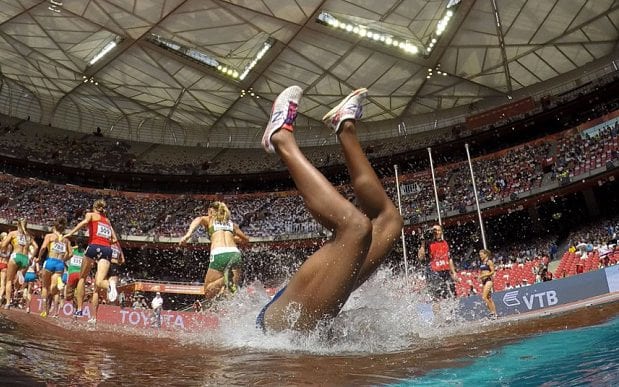Running Injuries! Sorry to be the bearer of bad news, but at some point in your running career you will get injured. Unfortunately, injuries are part of the sport. Think about it: Even professional runners get injured despite having access to the world’s best coaches, doctors, physical therapists, massage therapists and sports scientists. If injuries were 100% avoidable, don’t you think professional athletes would be able to escape them?
The key is to reduce your chances of getting injured by focusing on what you can control. And if you do get injured, there are ways to minimize the time you’re unable to run.
The good news is most injuries are avoidable. Research suggests that over 60% of all running injuries are caused by training errors, and the culprit is something well within your control: overuse, or running too much, too soon, and too hard.
Here are six tips to help reduce your chances of injury due to overuse and keep you fit.
Listen to your body
The number one goal of training is staying healthy; number two is running fast (though slow training runs are important too). Remember this: It’s better to be undertrained and able to race than injured, yet fit, and not racing. Reduce your training load or skip workouts/runs if you feel running injuries are coming on (i.e. dull pains or aches in places you haven’t noticed them before).
Know when to back off
If you’re experiencing some discomfort, use these guidelines to determine if you should run or not: If the discomfort decreases as you run or stays the same for less than three days, it’s OK to run; if the discomfort increases as you run or won’t subside after three days of easy running, you should take a few days off.
Take planned breaks
Most recreational runners don’t do this, but it’s essential. Avoid beginning a training regimen for your next big race immediately following a big race. Take 4 to 7 days off completely after big races. This break will allow your body to fully recover in preparation for the next training cycle while giving you a mental break. Planned breaks are better than injury breaks. And don’t worry — you won’t lose fitness.
Focus on strength, not running form
A lot of runners believe that if they perfect their running form, they’ll get injured less or run faster. While there may be some truth to that idea, your running form may be off because you’re either not strong enough to maintain proper running form or you have strength imbalances. Start incorporating strength training to address these issues. If you’re concerned about your form, seek qualified help, ideally a doctor, someone with an advanced medical degree.
Have a plan, and keep track of your mileage
You should always be able to answer the question, “How many miles did I run two weeks ago? Three weeks ago?” And so on. Knowing these stats will help avoid overuse. After all, how can you know if you’re doing too much if you can’t look back at what you’ve done? Start keeping a running log.
Use the stress/rest cycle
This is how your body gets fitter and increases your ability to maintain higher training volume and faster paces. Avoid running every run at the same intense pace. Have two to three days a week where you’ll either run hard or fast, but the remainder of the days should be run at a comfortable pace. Use the talk test to determine what a comfortable should be: If you can’t easily hold a conversation while you’re running, you’re running too fast.
Now that you know how to avoid the avoidable, let’s talk about unavoidable injuries. These are injuries related to our genetic makeup outside our control. The key here is to minimize the downtime and reduce the length of time you’re unable to run.
Here are three tips to get you back running as quickly as possible:
Take immediate action
Once you realize you’re injured, seek medical advice immediately. Even if it seems like something small, make an appointment to see a doctor. You first want to rule out any serious injuries, such as stress fractures or muscle tears. If needed, a doctor will be able to prescribe physical therapy. Runners that follow a PT program will return to running quicker and stronger and are less likely to get injured again.
Have a recovery plan
Just like a running plan, you need to have an activity planned for every day you’re unable to run. If you’re cleared to cross-train, start. Treat cross-training like running: If your training plan calls for a 45-minute run, cross-train for 45 minutes. Look to include variety in your cross-training, mixing time spent sweating on the elliptical, swimming, biking, rowing and climbing stairs. Include stretching, foam rolling and/or massages.
Adjust your goals
Resuming normal training or running will most likely cause injuries again. Depending on how much time you’ve been off, rethink your training goals and plan and make necessary tweaks. Maybe you need to jump back a few weeks in your training plan to get your body back up to par. Don’t see this is a defeat — it’s smart training, and your body will thank you for it.
Read more BLOGS!
FOLLOW US ON INSTAGRAM!










0 Comments